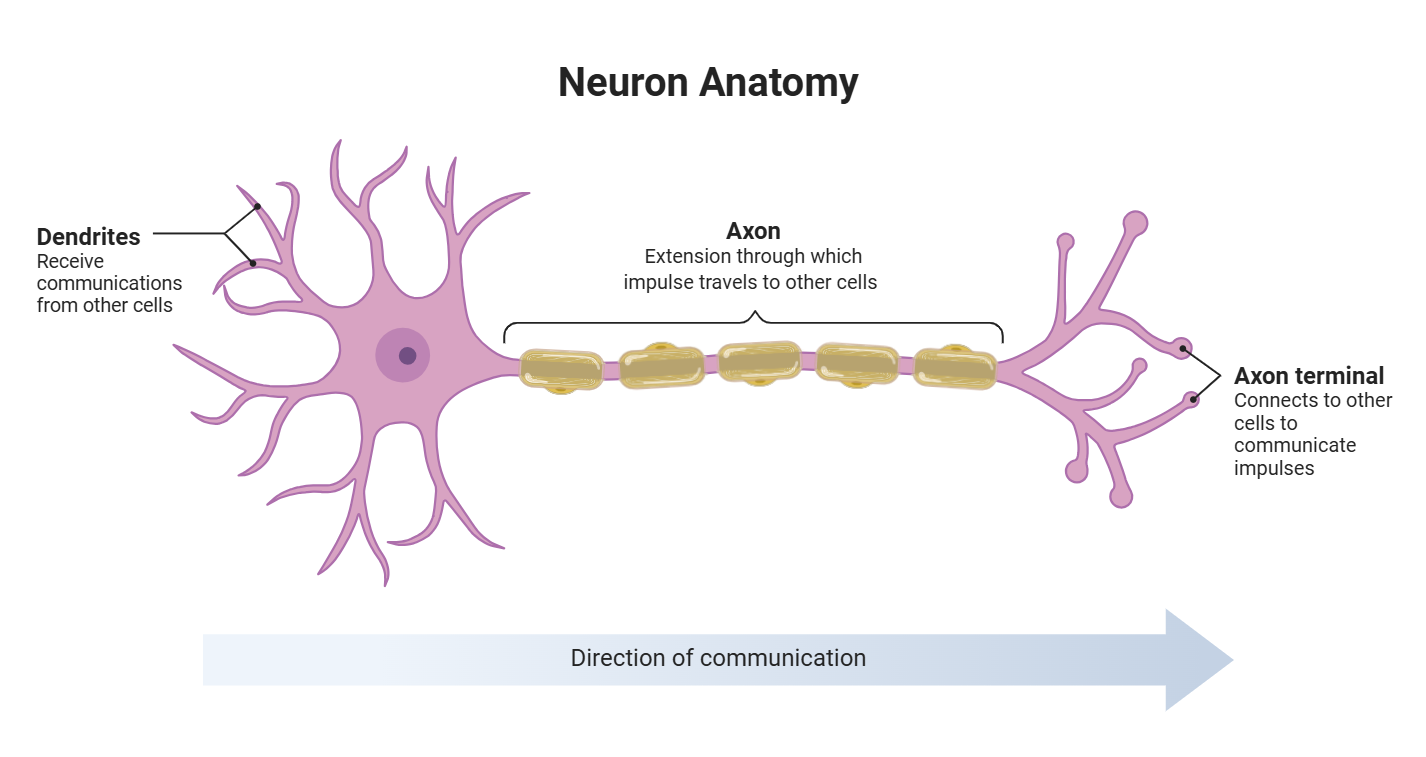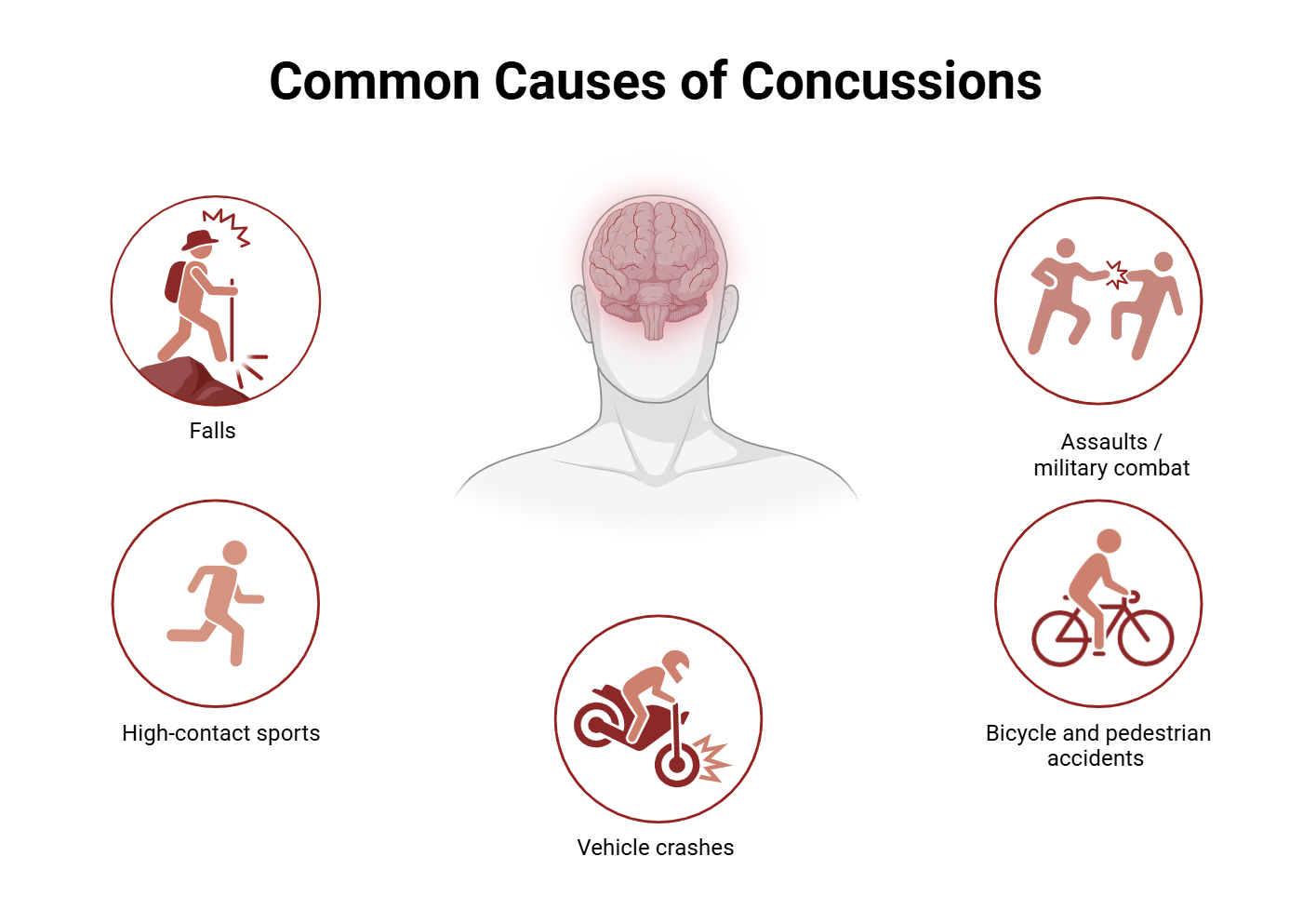by Macy Osborne-Frazier
Picture this: You are a young kid playing outside with your friends when you fall and smack your head hard against the concrete. While you lie on the ground, dazed with tears welling up in your eyes, a grown-up comes over and says, “Oh no, you really got your bell rung.” Head injuries are very common, with roughly 3 million Americans visiting the ER with some form of head injury every year. Due to their frequency, head injuries are often overlooked. However, as scientists learn more about how the brain works and how head injuries can have lasting impacts, the importance of taking even minor head injuries seriously is becoming more evident.
One of the most common head injuries, especially in children, is a concussion. Concussions account for more than half of all pediatric ER visits each year, so chances are you or someone you know has had at least one concussion. While a single concussion is not likely to have long-term effects, repeated concussions in a short period are linked to lasting damage. Therefore, understanding how concussions happen, how they alter brain function, and how to minimize the chances of experiencing one is essential.
Concussions occur when an impact to the head causes the brain to move rapidly inside the skull. The brain is a soft and squishy organ, and when it bounces around inside the skull, this causes injuries to the cells and blood vessels. Brain cells are specialized to facilitate communication between nerve cells using special chemicals called neurotransmitters. Injury or death of brain cells can change how you think, learn, feel, and act due to changes in how brain cells are able to communicate with one another and other cells in the body.

Figure 1. Schematic of the brain bouncing off the skull during a concussion (image source)
The brain contains several types of cells, one of which is a specialized type of nerve cell called a neuron. Neurons are responsible for transmitting signals from the brain via neurotransmitters that allow us to think, feel, and move. When neurons are injured by a concussion, their ability to communicate with other cells is impaired. Since neurons are responsible for sending so many different types of signals, concussions can cause a wide range of effects. Common concussion symptoms include drowsiness, confusion, nausea, trouble concentrating, blurry vision, and personality changes. All these symptoms are linked back to the inability of the neurons in the brain to properly communicate with other neurons and cell types in the body.

Figure 2: Anatomy of a neuron (created by the author with BioRender.com)
As mentioned previously, concussions are very common, and receiving a second concussion soon after the first one is especially dangerous. For that reason, it is important to understand how concussions commonly occur. Some of the most common causes of concussions are falls (particularly in young children and the elderly), high-contact sports like football, soccer, and wrestling, vehicle crashes, assault, military combat, and pedestrian and bicycle accidents. To minimize the risk of concussions, it is important to pay close attention when conducting tasks that often lead to falls, wear protective headgear while playing sports, wear a seatbelt while in an automobile, and practice awareness to avoid unintentional injury.

Figure 3. Common causes of concussions (created by the author in BioRender.com)
Although concussions were once often overlooked, ongoing research into how the brain works and reacts to injury has shown that even minor concussions should be taken seriously. Advancements in the study of concussions demonstrate how scientific research continually informs healthcare and highlight the importance of clear scientific communication for human health.
